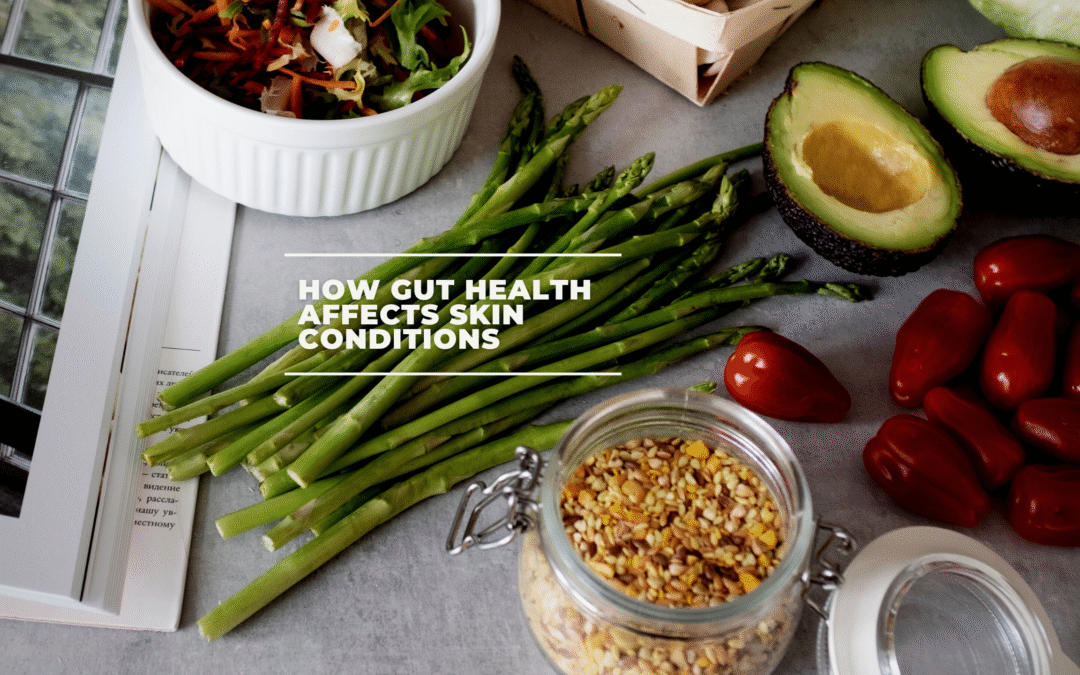Ever wondered why your skin breaks out when your digestion is off, or why that sudden eczema flare came after a round of antibiotics? Modern research is revealing a fascinating link between the gut and the skin—two seemingly separate organs deeply intertwined. Welcome to the gut-skin axis: a two-way communication network that’s redefining how we approach beauty and health.
Understanding the Gut-Skin Axis
What is the gut-skin axis?
The gut-skin axis refers to the bidirectional interaction between the gastrointestinal tract and the skin. It is influenced by diet, immunity, hormones, and the microbiome.
The role of the microbiome:
Both your gut and your skin are home to diverse microbial communities. A balanced gut microbiome supports systemic anti-inflammatory pathways, hormonal balance, and nutrient absorption—all vital for skin health.
How Gut Health Affects Skin Conditions-
Acne and dysbiosis:
Studies show that people with acne often have altered gut microbiota. Imbalanced bacteria can lead to increased intestinal permeability (“leaky gut”), triggering systemic inflammation that shows up on the skin.
Eczema and food sensitivities:
Atopic dermatitis is frequently linked to food allergens and gut inflammation. A compromised gut lining allows allergens to seep into the bloodstream, activating skin flare-ups.
Mechanisms That Link the Gut to the Skin-
Immune modulation:
70% of the immune system resides in the gut. When it’s overactive due to dysbiosis, the resulting inflammation can affect skin conditions like psoriasis and acne.
Nutrient absorption:
Vitamins like A, D, E, K, and essential fatty acids are absorbed through the gut. Deficiencies directly impact skin integrity, hydration, and healing.
Neuroendocrine signals:
Stress impacts the gut-brain-skin triangle. Cortisol can disrupt gut flora, and an imbalanced microbiome can increase stress markers, creating a vicious loop.
Probiotics, Prebiotics, and Postbiotics in Skincare
Probiotics:
Supplementing with Lactobacillus and Bifidobacterium strains can improve skin barrier function and reduce inflammation.
Prebiotics:
Non-digestible fibres that feed beneficial bacteria (like inulin or FOS) enhance both gut and skin flora.
Postbiotics:
These are bioactive compounds from fermented products. Recent innovations in dermatology use them topically and orally for calming skin inflammation and boosting microbiome health.
Lifestyle & Diet Tips to Optimize Gut and Skin Health-
- Eat diverse, fibre-rich foods:
Promote microbial diversity by consuming whole grains, legumes, fruits, and vegetables. - Avoid processed foods and excess sugar:
These promote bad gut bacteria and spike insulin—both linked to acne and aging. - Stay hydrated:
Water supports digestion and flushes out toxins, benefiting skin clarity. - Manage stress:
Meditation, sleep, and yoga positively influence gut health and, in turn, skin appearance.
Conclusion:
The gut and skin may be miles apart anatomically, but functionally, they’re deeply interconnected. Whether you’re battling breakouts or seeking a glowing complexion, it might be time to look inward—literally. By nurturing your gut, you’re not just boosting digestion; you’re laying the foundation for lasting skin health.

